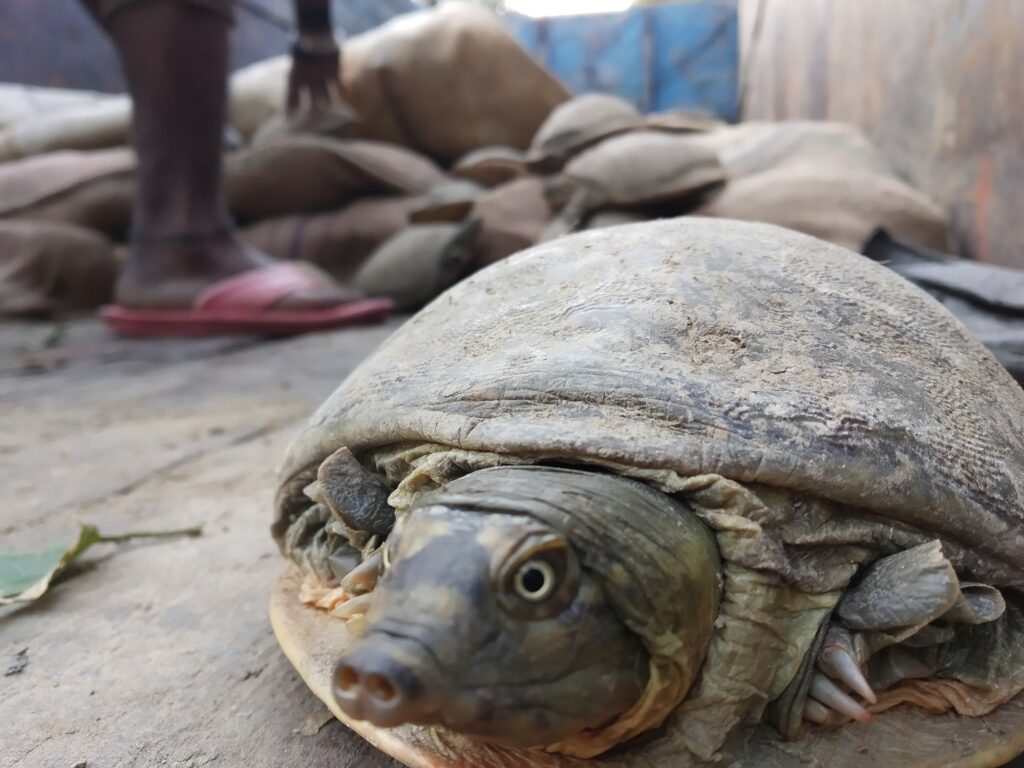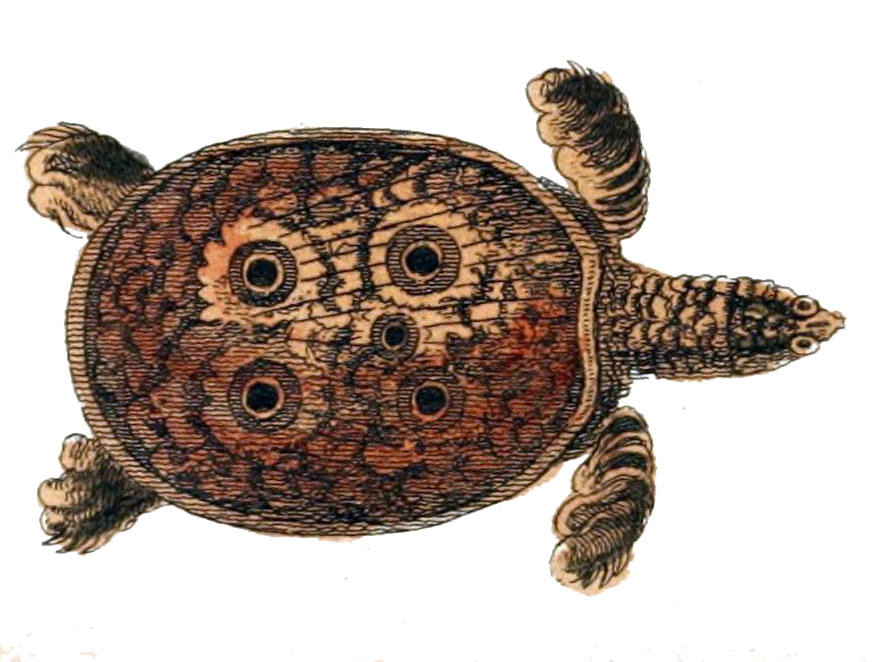Tripura is one of the seven states in North East India. It is surrounded by deltaic basins on three sides. The Tropic of Cancer passes through this hilly state. The state has diverse ecosystems that range from freshwater wetlands to grasslands and forests. It is located in the bio-geographic zone and is extremely rich in biodiversity. Its local flora and fauna resemble that of Indo-Chinese and Indo-Malayan sub-regions. It falls in the oriental zoo-geographic region of India. The state has 342 species of birds, 90 species of mammals and 32 species of turtle. Unfortunately, it is also a hub for the illegal wildlife trade, which has become a global threat to both humanity and biodiversity. Turtle meat is a popular delicacy.
Turtle Curry – a popular delicacy
A popular delicacy, turtle meat used to be available widely in Tripura. One could order turtle meat curries in hotels and restaurants across the state. Turtle meat was frequently consumed as it was available in nearby water bodies. It is an accessible source of protein. In the 1970s, turtle meat would cost between Re. 1- Rs. 2/kg back. By 1980s, it would cost around Rs 20- Rs 30/kg. The increasing demand for turtle meat, has inflated the prices of turtle meat curry. Currently, turtle meat is traded between Rs. 2,100/kg and Rs. 4,000/kg in the black market.

Trends in Turtle Meat Consumption
Over the years many factors have contributed to such a demand for turtle meat in the state. This includes increased purchasing power, generational eating practises. The most prominent factors, however, is its unique taste. I studied turtle consumption pattern as part of my Master’s dissertation under Tata Institute of Social Science, Guwahati. I found that many are unwilling to give up consuming turtle meat. This is even in the face of allergic reactions! When I investigated, I found that its taste is the pull factor for most. Unfortunately, many turtle meat consumers remain unaware of the declining population of turtles as well as their species’ protection status under law (Wildlife Protection Act, 1972).
Which turtle species are illegally traded?
I found that the following turtles are commonly consumed in Tripura:
1) Black Softshell Turtle (Nilssonia nigricans) locally known as “Kala Kachim”. The species is not protected under Wild Life Protection Act India. However, is classified by the IUCN Red List as “extinct in the wild”.
2) Peacock Softshell Turtle (Nilssonia hurum) locally known as “Kashram” in Kokborok (the native language of the Tripuri people) or “Dhum Kachim” in Bengali, is a Schedule I species under the Wild Life Protection Act India.
3) Indian Flapshell Turtle (Lissemys punctata) locally known as “til kachim” is also a Schedule I species under WLPA.
4) River Terrapin (Batagur baska) locally known as “Kathar” or “Pora Kathar” is also a listed Schedule I species under WLPA.
5) Indian Softshell Turtle (Nilssonia gangetica) locally known as “Ganga Kachim” is a Schedule I species under WLPA.

What are the trading routes?
There are two main markets from which people bought turtle meat namely Maharajganj bazar and Battala bazar. Despite the recent tightening of laws in the state and the ban that was strictly put in place, people still have access to the meat and continue to consume it despite not being sold openly or being available anywhere in the wet-markets now. Which becomes a matter of concern and puts forward the question as to how the people are still able to get hold of the meat for consumption?
It brings forward the need for stricter enforcement of law, frequent patrolling and tighter security checks in places where there may be possibilities via which these turtles could be brought into the state. From where these turtles keep being smuggled into the state remains a big question, as there are no detailed studies. Even though it is well known that the turtles that come to the state for trade are illegally brought from Bangladesh, there is no confirmation on the trade routes via which the turtles enter the state.
What is being done to prevent turtle consumption?
The state forest department should take up initiatives to keep the trading activities in check by conducting frequent but random raids. In that, keep the people informed about matters such as this. They should frequently organise awareness campaigns for the citizens in townships and remote areas, help form citizen science groups, conduct sensitisation programmes, and conduct workshops on familiarisation of laws in simple terms, etc., civil society groups should also collaborate and take up such initiatives systematically to gradually bring about changes in their perception about the significance of turtles and why they need to be saved. Participation of local communities is significant for turtle conservation, as for any conservation effort to be successful, public cooperation and participation is the key.
Help us Help Them! Think Wildlife Foundation is a non profit organization with various conservation initiatives. Our most prominent campaign is our Caring for Pari intiative. Pari is a rehabilitated elephant at the Wildlife SoS Hospital. 25% of the profits from our store are donated to the elephant hospital for Pari. Other than buying our wonderful merchandise, you could donate directly to our Caring For Pari fundraiser.
